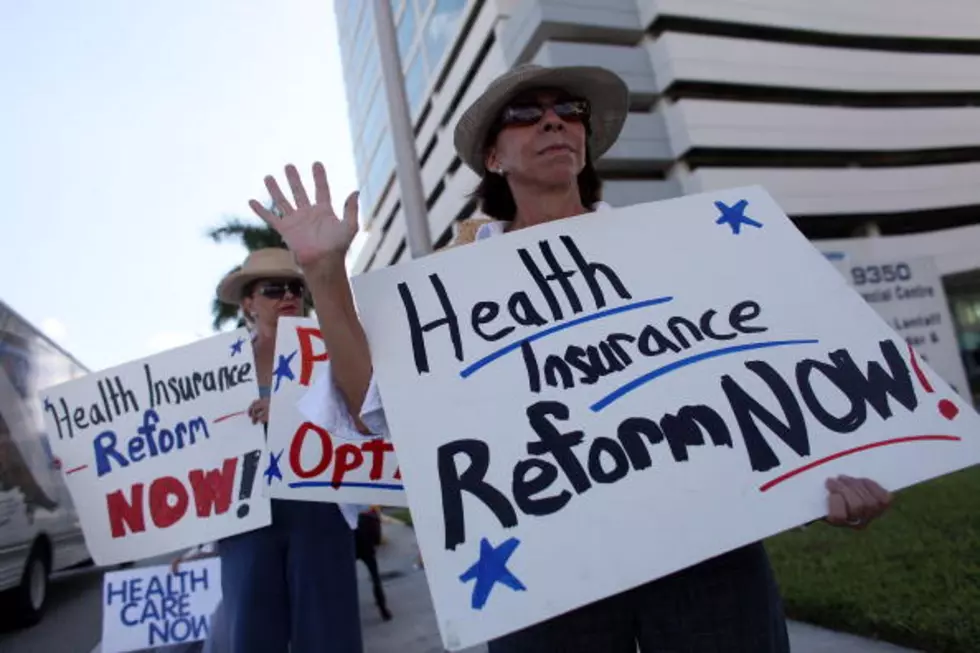
Are Health Insurance Companies Just In It For The Bucks?
While watching the reports of the arguments, for and against, the Affordable Care Act (ACA) before the Supreme Court, I thought back to President Obama’s visit to Montana in 2009. His speech, delivered in the hanger of what was then Gallatin Field, was peppered with comments about the evils of healthcare providers and health insurance companies
From the president’s perspective, the insurance companies sole purpose for existence was to deny claims, collect high premiums and make big bucks for the administrators of the plans.
The president had no problem putting all the big players under the spotlight. Kaiser, Blue Cross, Well Point just to name a few. Most of these companies were in the process of petitioning their state insurance commissions for permission to increase their rates in the event the ACA passed. Yes, insurance companies can’t just raise rates because they feel like it. They have to make a case and get approval.
Are there any honest healthcare plans?
Yes, there are. Here is some information I found about healthcare that might surprise you. In November 2011, Consumer Reports and the National Committee for Quality Assurance (NCQA) determined that for the 7th year in a row, the highest-quality healthcare plans in the United States are provided, — not by FOR-profit health plans, — but by NON-profit health plans.
So, non-profits deliver good care. So what? Everyone knows it’s the big, for profit, insurance plans that insure the bulk of America’s population.
Here are the facts according to the Alliance for Advancing Non-Profit Healthcare.
- Of the 138 health plans in the United States with at least 100,000 medical enrollees, 84 or 61% are nonprofit.
- Of the 203,203,306 total medical enrollees of these 138 health plans, 97,931,924 or 48% are in nonprofit health plans.
- It is estimated that nonprofit Blue Cross Blue Shield plans have about 34% of the commercial risk medical market and 32% of the commercial Administrative Service Only (ASO) medical market and that other nonprofit health plans have about 20% of the commercial risk medical market and 10% of the commercial (ASO) medical market, with for-profit plans accounting for the remaining percentages of these two medical markets.
Source: www.nonprofithealthcare.org/resources/BasicFactsAndFigures-NonprofitHealthPlans9.9.08.pdf
OK, so they’re non-profit. What prevents the “crony old boys club,” otherwise known as their board of directors, from giving the CEO, and themselves, big salaries and perks like any for-profit insurance company?
Section 4958 of the Internal Revenue Code, known as “Intermediate Sanctions,” governs exempt organizations and allows the Internal Revenue Service to impose a penalty, tax, or both on overpaid CEOs and individual board members who approve the excessive payments. In other words, “Your tax dollars at work.”
Some final points from The Alliance for Advancing Non-Profit Healthcare
“About 60 percent of community hospitals are nonprofit, all community health centers are nonprofit, and almost 30 percent of nursing homes are nonprofit, and about 17 percent of home health care agencies are estimated to be nonprofit. Nonprofit health plans are estimated to serve over 40 percent or more of all private health insurance enrollees.”
“Rather than inuring (yes, that’s a word) to the benefit of private owners, the earnings and reserves of nonprofit health care organizations are reinvested to benefit the community.” (OMG, how un-American, that’s Washington’s job)
Some final thoughts
As of this writing, the total workforce in the United States is slightly over 143 million. I realize not everyone working has the benefit of healthcare in the work place. But I would make the case than when you have 97 million people insured, and your goal is NOT to make a profit, for an owner or board of directors, that non-profits do a lot more to hold down the cost of health care than any government plan or regulation could do.
Unfortunately, these plans are doomed for extinction. Why? Because they are doing it right. They are regulated just enough to still be affordable, yet provide efficient services. And for that very reason they are directly in the cross hairs of big government. And, make no mistake, — socialist, single payer healthcare has its finger firmly on the trigger. The only crime these plans commit is to provide quality care without government interference, oversight or approval. Government hates it when they can’t come in the house. Did I just hear the doorbell?
Tomorrow's Topic: How do Oil Speculators Influence the Price of Gasoline.
More From KMMS-KPRK 1450 AM









